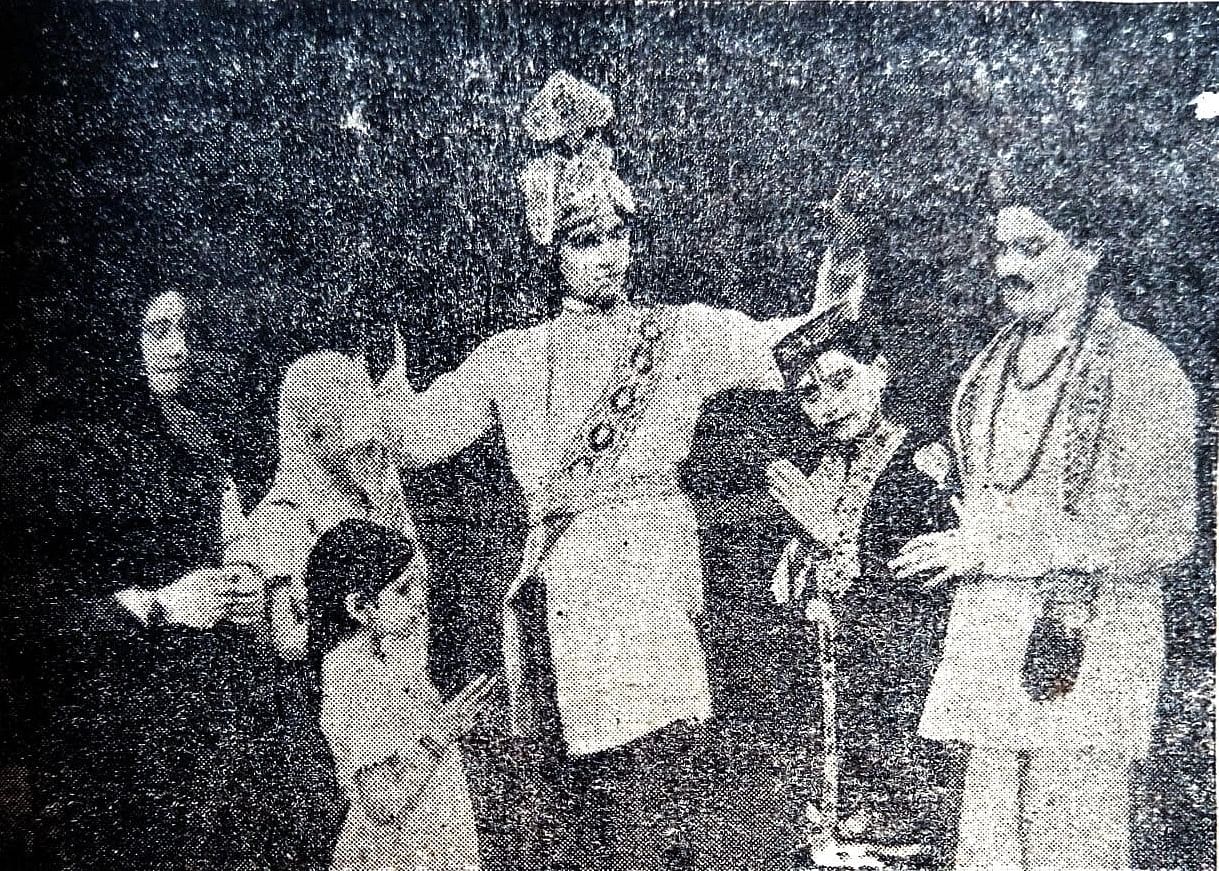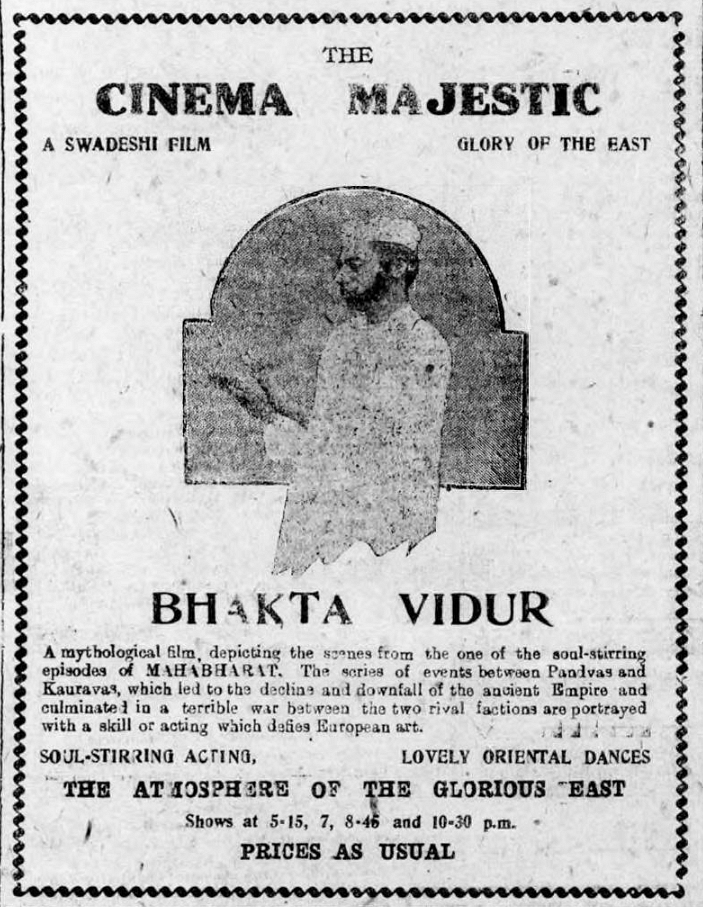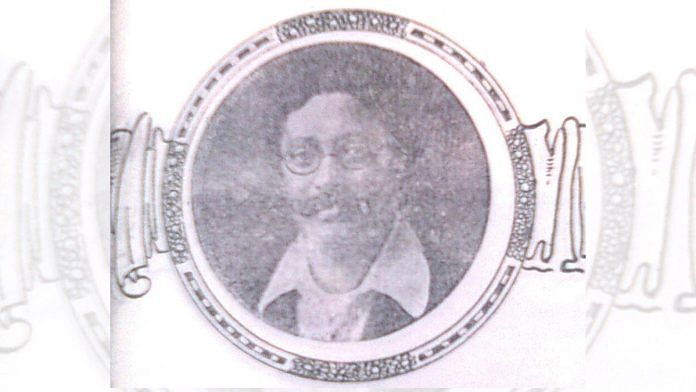Contrary to popular belief, the list of Gujaratis contributing to Bollywood films in areas other than finance and distribution is quite long. Film historian Harish Raghuvanshi of Surat listed more than 500 Gujaratis who were associated with films in various capacities right from the beginning of the industry. Kanjibhai Rathod was one such craftsman. He was the first professional director of Indian cinema.
Rathod was employed to direct films in the era when the camera owners used to choose a story, prepare the script, shoot the film, and produce under their banners all by themselves. Veteran film historian late Virchand Dharamsey highlighted the contribution of Rathod and some other stalwarts through meticulous research.
Director of banned film
Born in a Dalit family, Rathod started as a still photographer and an actor in America-returned filmmaker Suchet Singh’s Oriental Film Company in Bombay (now Mumbai). He played the title role of Narsinh Mehta in a 1920 silent film of the same name. A Dalit actor playing the role of a 15th Century saint poet who was ostracised for mingling with Dalits in his time was quite a coincidence. After Singh’s untimely death, Rathod joined Kohinoor Film Company owned by a Gujarati pioneer and visionary filmmaker Dwarkadas Sampat.

It was Sampat who realised the need for a specialised director for the films and appointed Rathod for the newly created job profile. Rathod directed 31 silent films under Kohinoor from 1921 to 1924. The most remembered of the lot is Bhakta Vidur (1921). Based on the popular story of Mahabharata, the film echoed the atmosphere of the Non-cooperation Movement and Khilafat Movement under the leadership of MK Gandhi. Sampat played the role of Vidur and dawned a Gandhi cap and Khadi kurta. The film was advertised as a swadeshi film.
The film ran for four weeks in the Majestic Cinema of Bombay, a successful run in the era of silent films. But the local administration of Madras and Karachi took objection to the Gandhian version of Mahabharata and banned the film. Later, a countrywide ban was imposed on the film.

Rathod worked for Saurashtra Film Company in Rajkot for some time in 1924-25. But his second most important stint was at Shri Krishna Film Company owned by Maneklal Patel. He directed 21 films there. I had a chance to meet Patel’s aging daughter in Ahmedabad around a decade back. She had an old catalog of her father’s film company. It had a photo of ‘Kanjibhoy J. Rathod, Our most able director’ along with other employees.
Patel’s daughter remembered him as ‘Kanjikaka’ and recollected that he was treated without any discrimination despite his caste. She told me that Rathod joined her brother’s barat (marriage procession) and was greeted with due respect along with the other elders of the family.
Also read: Narsinhbhai Patel, Gujarati radical with DIY book on bombs denied God, called marriage a fraud
Haveli to a humble hut
I heard some more stories of Rathod during my visit in 2012 to his native village Ponsara, near Navsari in south Gujarat. According to some local elderly people, there was a trend among Dalits of the area to leave for Bombay in those days when the Parsis and the English were not averse to giving them work. According to a village elder, a few of Rathod’s relatives were already settled in Bombay. Patel’s daughter and some locals of Ponsara who knew Rathod remembered his ‘personality’. He wore dhoti-kafni made from Khadi and would hire a tonga (carriage drawn by one horse) from Maroli railway station—a mark of a well-to-do man—when he would come to Ponsara from Bombay.
Navnitbhai Patel, a village local, showed me Rathod’s house. His nephew Premabhai’s wife Gangaben and her son Dinesh used to live there at the time. It was an ordinary village house with some land around it. According to Rathod’s distant relative Gopalbhai Master, there used to be a haveli on the land when Rathod was in his prime. It was dismantled later and the humble hut-like house was built.

After the beginning of the talkie era in 1935, things got difficult for Rathod. He directed 16 Hindi talkies till 1940 and directed a Gujarati film Shethno Salo (1949) but could not regain his glory. He joined director Dhirubhai Desai as a production manager in 1940. Rathod’s name also appears in the credit titles of the film Saranga (1961), produced and directed by Dhirubhai.
Gopalbhai Master told me that Rathod married for the second time in Bombay and had a son, Suresh. He left the city after Suresh’s untimely demise due to smallpox. When he came back to Ponsara, he had no means of income. All he had was four to five chickens. When Gangaben came to the Ponsara home after marrying his nephew. Rathod was still living there. Gangaben did not have any idea of her uncle-in-law’s career and contribution to films when I met her. There was not a single photo or any object indicating Rathod’s film connection in the dilapidated house, which was razed down a few months after my visit.
Urvish Kothari is a senior columnist and writer based in Ahmedabad. Views are personal. This article is part of a on-going series, Gujarat Giants.
(Edited by Ratan Priya)



